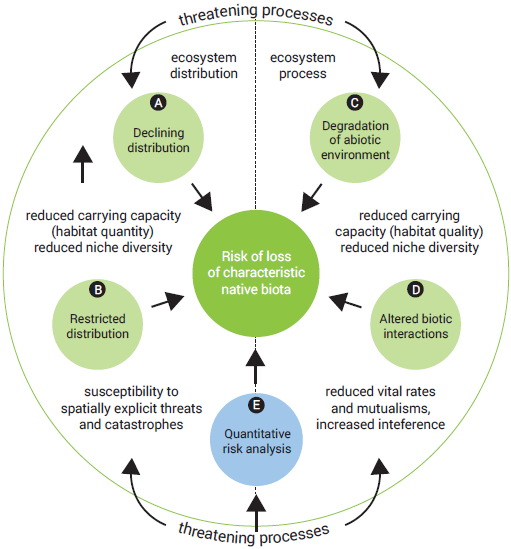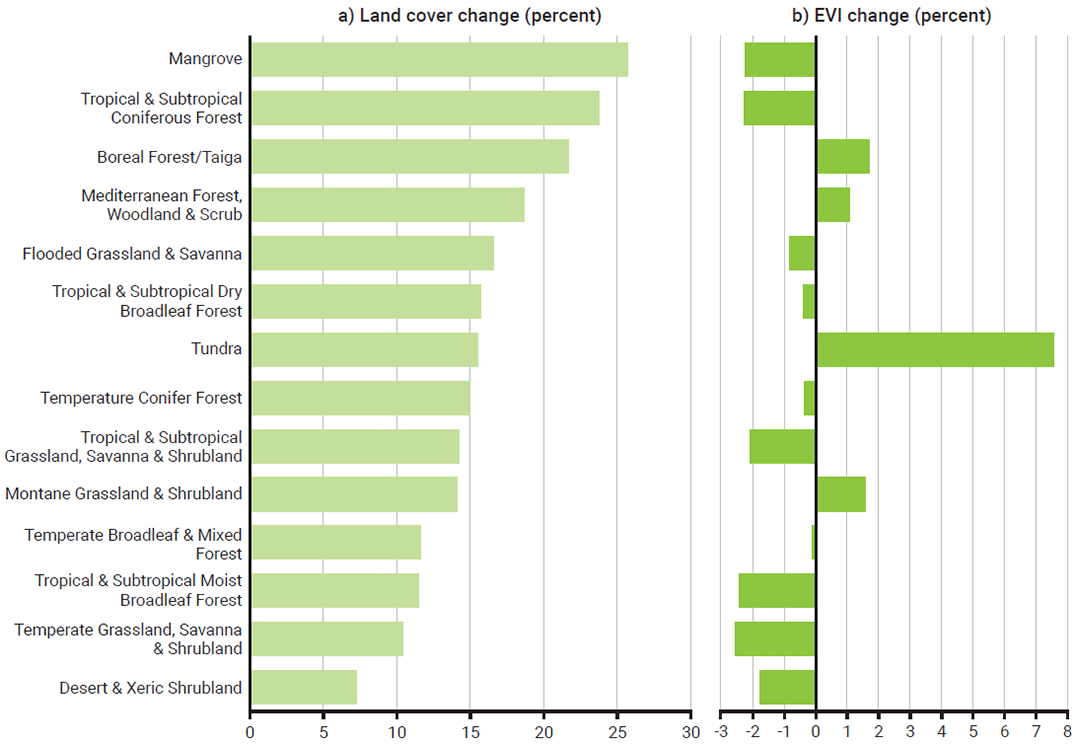There is a pressing need to expand ecosystem assessments. The IUCN has begun to issue a Red List for Ecosystems to complement its global species-based assessment (Keith et al. 2015), and a few ecosystems have been assessed by global and regional criteria. One ecosystem, the Aral Sea, has been assessed as ‘collapsed’ (Figure 6.15) (Sehring and Diebold 2012; Keith et al. 2013), and several others, such as the gnarled mossy cloud forest on Lord Howe Island of Australia, and the Gonakier forests of the Senegal river floodplain shared by Senegal and Mauritania, have been listed as ‘critically endangered’ (see Red List of Ecosystems; IUCN 2017b).

Collapse may be reversible if all the component parts of the collapsed ecosystem still exist in other ecosystems (Rodríguez et al. 2015). However, shifts to alternative stable states, such as that documented in coral reef systems, from coral dominated to algal dominated, with human-induced eutrophication, cannot be simply reversed (Hughes et al. 2017).
Some information is available at a large scale for broad terrestrial habitat types, and it is estimated that 10 out of 14 experienced a decrease in vegetation productivity between 2000 and 2013, while 4 increased in productivity (Figure 6.16), with anthropogenic factors thought to be driving these trends (Royal Botanical Gardens Kew 2016). At a finer scale, 24 per cent of terrestrial ecoregions have been classified as ‘Nature imperilled’ (Dinerstein et al. 2017).
More is known about the status of terrestrial species and ecosystems than their aquatic counterparts. However, an average decline in natural wetland area of about 30 per cent between 1970 and 2008 was observed globally (Dixon et al. 2016), varying from a 50 per cent decline in Europe to 17 per cent in Oceania. While the spatial extent of anthropogenic impacts on marine ecosystems has been estimated (Jones et al. 2018), relatively little is known about their current status. Nonetheless, the impact of pressures on the marine environment is thought to be increasing, as evidenced by marine wildlife loss (McCauley et al. 2015) and the current critical status of coral reefs (Hughes et al. 2017). The deepsea ecosystem is probably one of the least well studied and is expected to be particularly vulnerable to habitat loss and climate change (Barbier et al. 2014).

The status of biodiversity that explicitly underpins nature’s contribution to people has not yet been comprehensively assessed, although a global assessment of biodiversity and ecosystem services will be published by IPBES in 2019. However, many of these ecosystem processes are thought to be under threat as a consequence of observed wildlife declines and ongoing threats to biodiversity (Cardinale et al. 2012; Mace, Norris and Fitter 2012). Mammal and bird species that are used for food and/or medicine are at greater risk of extinction than those not used; the opposite was found for the same assessment of amphibian species (Almond et al. 2013). The perceived value of a species may impose an additional pressure on biodiversity conservation: of the 28,187 plant species that are recorded as being of medicinal use, there are controls on international trade for 1,280 to reduce threats from overexploitation (Royal Botanical Gardens Kew 2017).